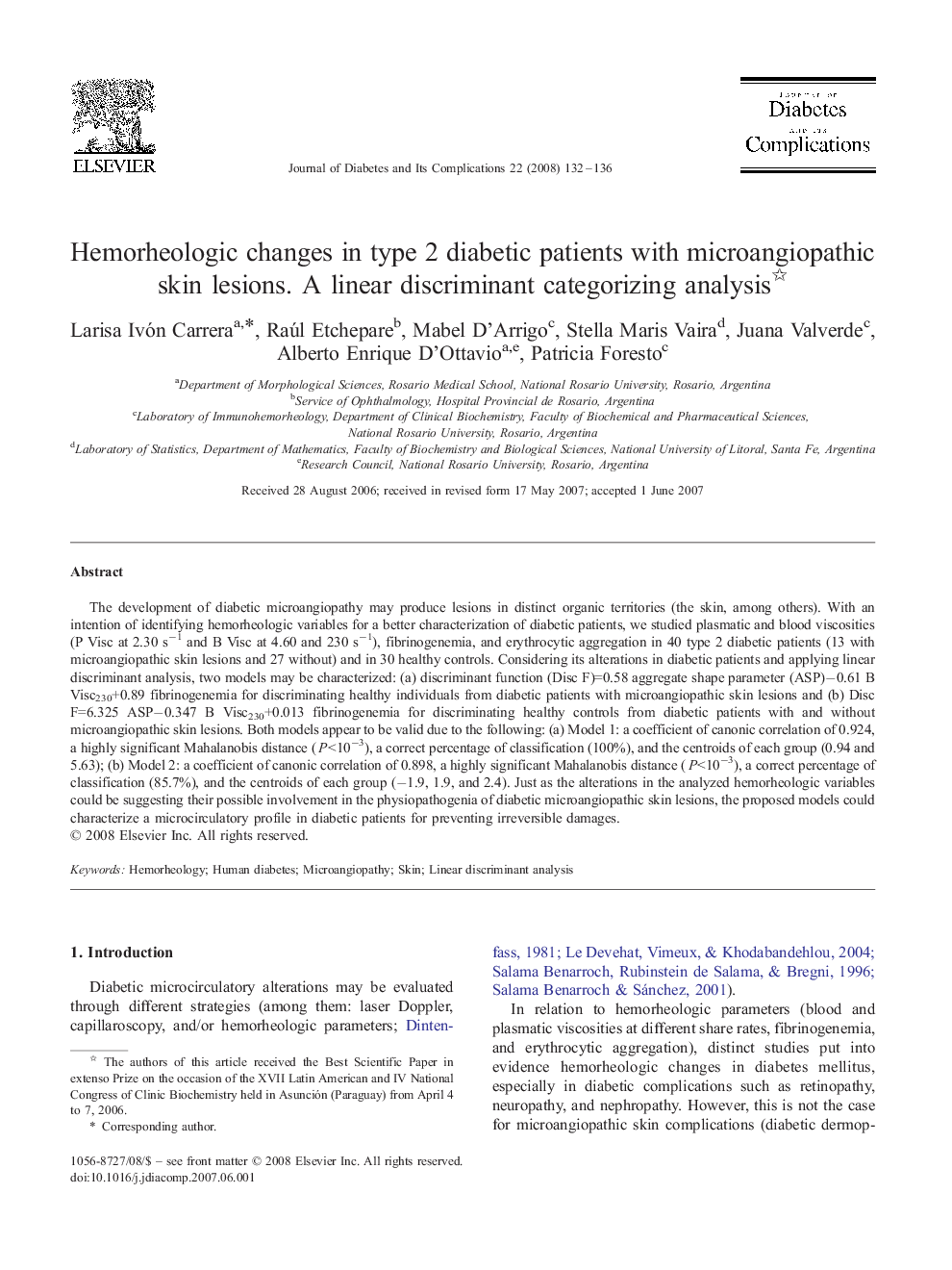| کد مقاله | کد نشریه | سال انتشار | مقاله انگلیسی | نسخه تمام متن |
|---|---|---|---|---|
| 2804882 | 1156906 | 2008 | 5 صفحه PDF | دانلود رایگان |

The development of diabetic microangiopathy may produce lesions in distinct organic territories (the skin, among others). With an intention of identifying hemorheologic variables for a better characterization of diabetic patients, we studied plasmatic and blood viscosities (P Visc at 2.30 s−1 and B Visc at 4.60 and 230 s−1), fibrinogenemia, and erythrocytic aggregation in 40 type 2 diabetic patients (13 with microangiopathic skin lesions and 27 without) and in 30 healthy controls. Considering its alterations in diabetic patients and applying linear discriminant analysis, two models may be characterized: (a) discriminant function (Disc F)=0.58 aggregate shape parameter (ASP)−0.61 B Visc230+0.89 fibrinogenemia for discriminating healthy individuals from diabetic patients with microangiopathic skin lesions and (b) Disc F=6.325 ASP−0.347 B Visc230+0.013 fibrinogenemia for discriminating healthy controls from diabetic patients with and without microangiopathic skin lesions. Both models appear to be valid due to the following: (a) Model 1: a coefficient of canonic correlation of 0.924, a highly significant Mahalanobis distance (P<10−3), a correct percentage of classification (100%), and the centroids of each group (0.94 and 5.63); (b) Model 2: a coefficient of canonic correlation of 0.898, a highly significant Mahalanobis distance (P<10−3), a correct percentage of classification (85.7%), and the centroids of each group (−1.9, 1.9, and 2.4). Just as the alterations in the analyzed hemorheologic variables could be suggesting their possible involvement in the physiopathogenia of diabetic microangiopathic skin lesions, the proposed models could characterize a microcirculatory profile in diabetic patients for preventing irreversible damages.
Journal: Journal of Diabetes and its Complications - Volume 22, Issue 2, March–April 2008, Pages 132–136